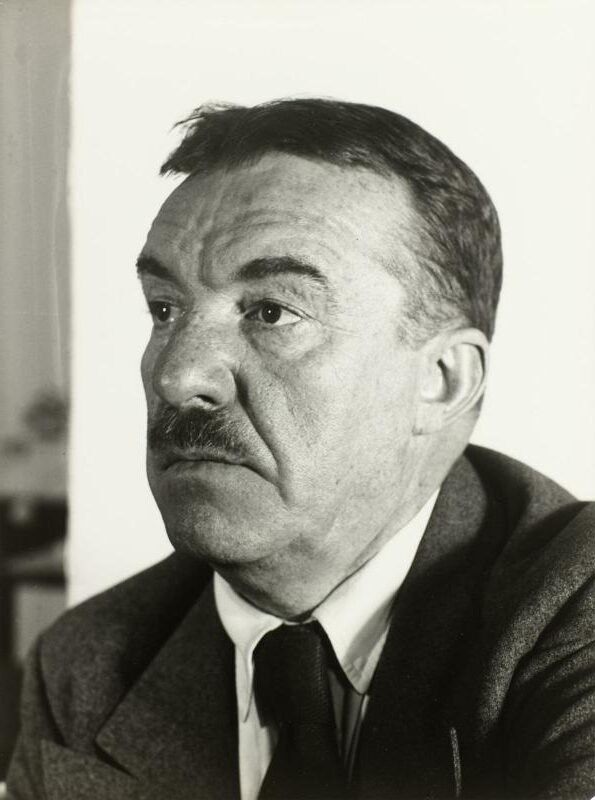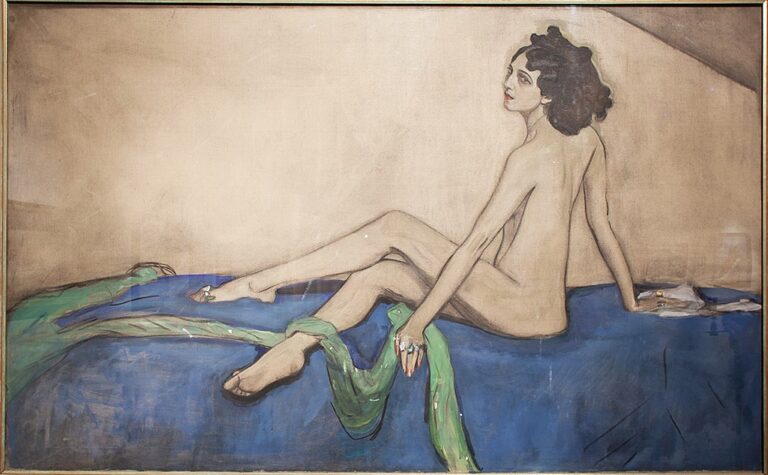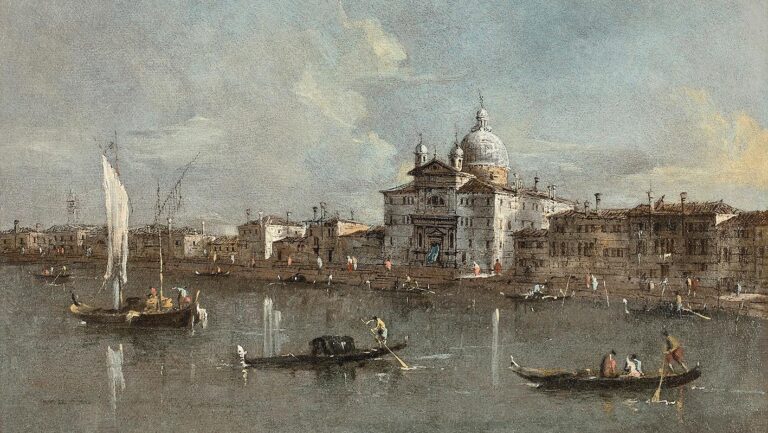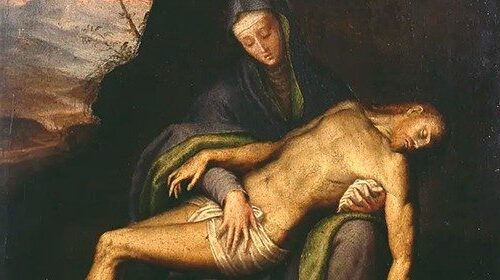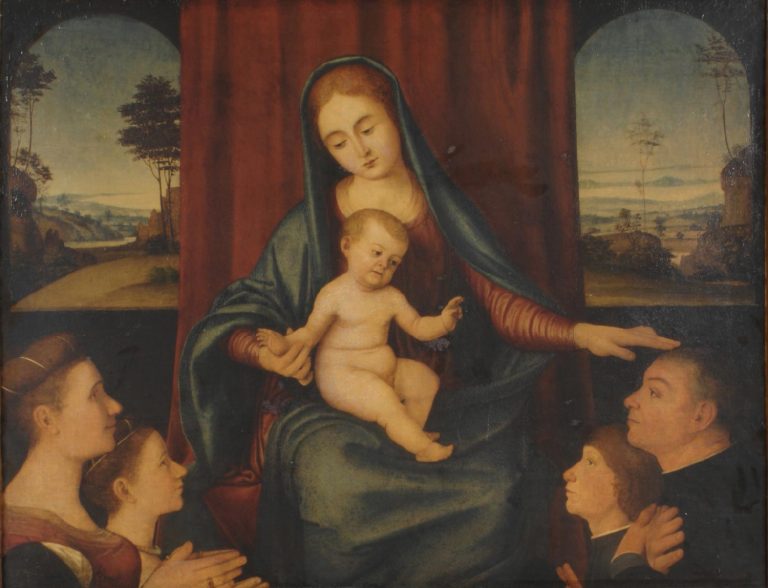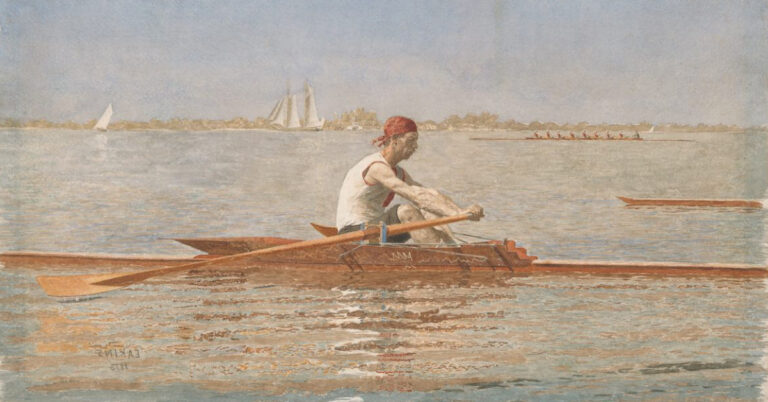Fernand Léger: Pioneering Cubist Painter of the 20th Century
Born: February 4, 1881, Argentan, Orne, France
Death: August 17, 1955, Gif-sur-Yvette, France
Art Movement: Cubism, Modernism
Nationality: French
Teacher: Jean-Léon Gérôme
Institution: School of Decorative Arts, École des Beaux-Arts, and Académie Julian
Fernand Léger: Pioneering Cubist Painter of the 20th Century
Life and Legacy of Fernand Léger
Fernand Léger emerged as one of the most distinctive artists of the modernist movement. His works celebrated mechanical and industrial imagery while remaining accessible to everyday viewers.
Biographical Overview
Fernand Léger was born on February 4, 1881, in Argentan, France. He first worked as an architectural draftsman before pursuing formal art training.
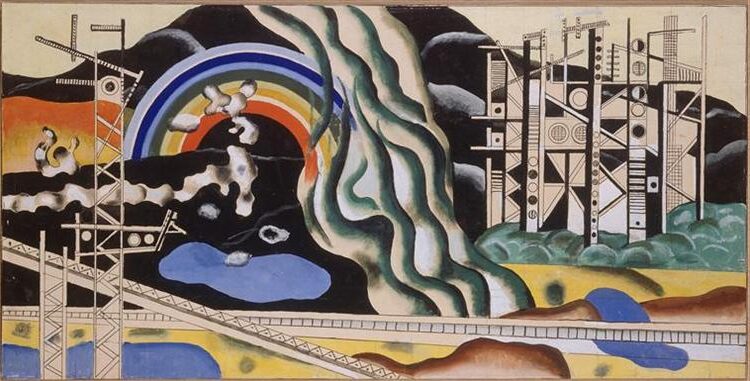
Transport Forces (Le Transport des Forces, 1937) by Fernand Léger
After moving to Paris in 1900, Léger studied briefly at the École des Beaux-Arts. He developed his distinctive style in Montparnasse, where many avant-garde artists gathered in the early 20th century.
Throughout his life, Léger maintained a commitment to making art accessible to ordinary people. This philosophy informed both his teaching career and his artistic output.
He died on August 17, 1955, in Gif-sur-Yvette, France, leaving behind a remarkable body of work that bridges fine art and popular visual culture.
Influences and Contemporaries
Paul Cézanne’s structured approach to form significantly shaped Léger’s artistic vision. This influence is evident in Léger’s emphasis on cylindrical forms and bold outlines.
Léger developed close relationships with Pablo Picasso and Georges Braque during Cubism’s formative period. While he absorbed elements of Cubism, Léger created a more personal style focused on mechanical subjects and primary colors.
His friendship with architect Le Corbusier led to collaborative projects and reinforced his interest in the relationship between art and architecture. Both shared a fascination with modern technology and industrial design.
Beyond visual arts, Léger was inspired by film, circus performances, and urban life. These diverse influences contributed to his dynamic, rhythmic compositions.
Military Service and World War I
Léger’s military service during World War I profoundly transformed his artistic perspective. As a stretcher-bearer on the front lines, he witnessed the brutal machinery of modern warfare firsthand.
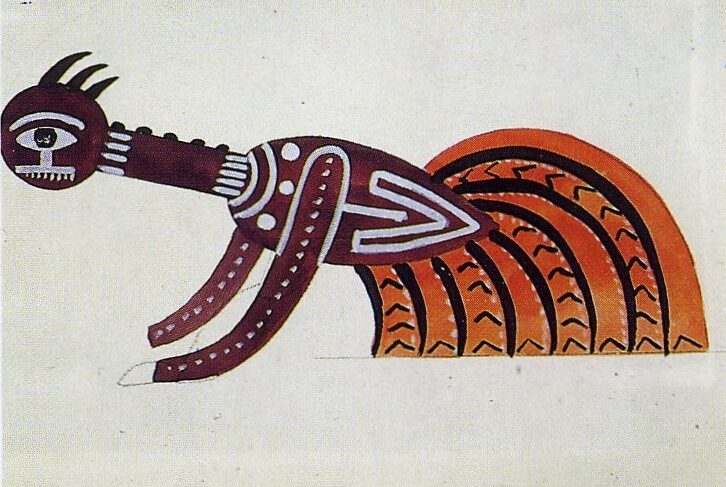
The Creation of the Prehistoric World State (1923) by Fernand Léger
The war experience intensified his fascination with mechanical forms. He famously remarked that the sight of a machine gun in sunlight revealed more beauty to him than traditional subjects.
His post-war paintings reflected this mechanical aesthetic with increasing boldness. Works from this period feature tubular, metallic-looking human figures that blend with machine elements.
After the war, Léger’s political views shifted leftward. He later joined the French Communist Party, though his art remained accessible rather than overtly political. His commitment to creating art for ordinary people aligned with his social beliefs.
Artistic Evolution and Major Works
Fernand Léger’s artistic journey spanned multiple movements and styles, evolving from early Cubist experiments to his distinctive mechanical aesthetic and later more accessible populist work. His bold use of color and simplified forms created a unique visual language that influenced generations of artists.
Development of Personal Style
Léger began his career influenced by Impressionism, but quickly moved toward the avant-garde. After encountering Cubism around 1910, he developed his own variation sometimes called “Tubism” due to his cylindrical, tubular forms. Unlike other Cubists, Léger emphasized bold primary colors and strong contrasts.


His style crystallized in his “Contrast of Forms” series (1913-1914), where he reduced objects to geometric shapes with sharply defined edges. The mechanical precision in these works reflected his fascination with modern machinery and urban environments.
After serving in World War I, Léger’s aesthetic became even more mechanistic. His experiences in the war reinforced his belief that art should reflect contemporary life and technology.
Key Paintings and Projects
“The City” (1919) stands as one of Léger’s masterpieces, capturing urban dynamism through fragmented, overlapping mechanical forms. The painting’s bright colors and geometric shapes create visual rhythm that mimics the energy of modern urban life.

The City (La Ville) (1919) by Fernand Léger
“The Card Players” (1917) shows Léger’s unique treatment of human figures as machine-like constructions. The bodies of the card players are broken down into cylindrical, metallic forms.
Léger also created significant murals and public works. His large-scale projects include designs for the United Nations building and stained glass windows for churches in Audincourt and Courfaivre.
“Nudes in the Forest” (1909-10) demonstrates his early style, while “My Mother’s Garden” (1905) reveals his briefer exploration of Impressionist techniques.
Cubism and Beyond
While connected to the Cubist movement, Léger pursued a distinct path. His work maintained a stronger connection to recognizable subjects than many Cubists, focusing on the dynamic relationship between humans and machines.
By the 1920s, Léger moved beyond strict Cubism toward a more figurative style. Works like “Three Women” (1921) incorporated elements of classicism while retaining his mechanical aesthetic.
After visiting America in the 1930s, his color palette brightened further, and his subjects became more accessible. His late works depicting construction workers, cyclists, and “Peasant Family” (1954) reflect his commitment to creating art that celebrated everyday people.
Léger’s bold style and industrial themes made him a forerunner of Pop Art. His emphasis on primary colors and everyday subjects influenced later generations, establishing him as a pivotal figure bridging early modernism and post-war art movements.
Contributions to Arts and Culture
Fernand Léger revolutionized 20th-century art through his unique approach to form, color, and subject matter. His influence extended well beyond painting into multiple artistic domains.
Collaborations and Diverse Media
Léger eagerly explored artistic territories beyond canvas painting. In the 1920s, he collaborated with filmmaker Dudley Murphy on “Ballet Mécanique,” an experimental film that mirrored his fascination with mechanical movement and modern life.
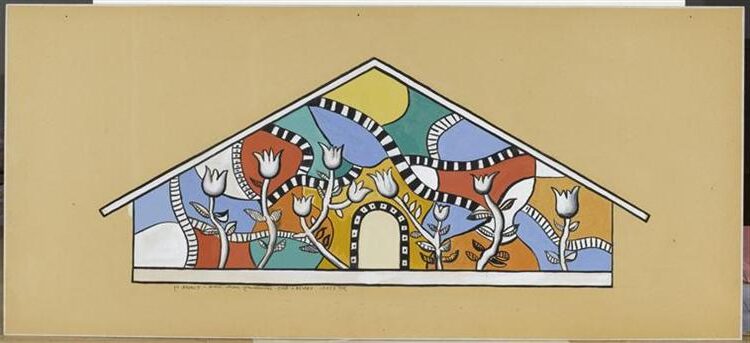
Church Sancellemoz Assy (1947) by Fernand Léger
His architectural contributions were significant. Working as an architectural draftsman, Léger designed colorful mosaics and stained-glass windows for buildings. The Church of the Sacred Heart in Audincourt, France showcases his vibrant stained glass work with bold lines and geometric forms.
Léger created numerous polychrome ceramic sculptures that brought his distinctive style into three-dimensional form. These works, with their cylindrical forms and mechanical elements, extended his “law of contrasts” aesthetic into sculpting.
His book illustrations, theater set designs, and tapestries demonstrated his versatility. At La Ruche, the Parisian artists’ residence, he exchanged ideas with other innovators, further expanding his creative reach.
Impact on Modern Art
Léger’s “mechanical period” profoundly influenced modernism. His painting “The Constructors” exemplified his celebration of workers and machines through monumental mechanistic forms.
He developed a distinctive style using tubular, machine-like forms with flat areas of color outlined in black. This approach challenged traditional painting methods and inspired generations of artists.
Léger embraced modern industrial technology as subject matter when many rejected it. His machine art presented a vision of harmony between humans and technology that was revolutionary.
His collage techniques, combining different textures and materials, helped expand artistic possibilities. Many later movements, including Pop Art, drew inspiration from Léger’s boldly defined forms and celebration of everyday objects.
Legacy and Memorials
Major museums worldwide preserve Léger’s artistic legacy. The Museum of Modern Art in New York, the Art Institute of Chicago, London’s Tate Gallery, and Centre Georges Pompidou in Paris all house significant collections of his work.
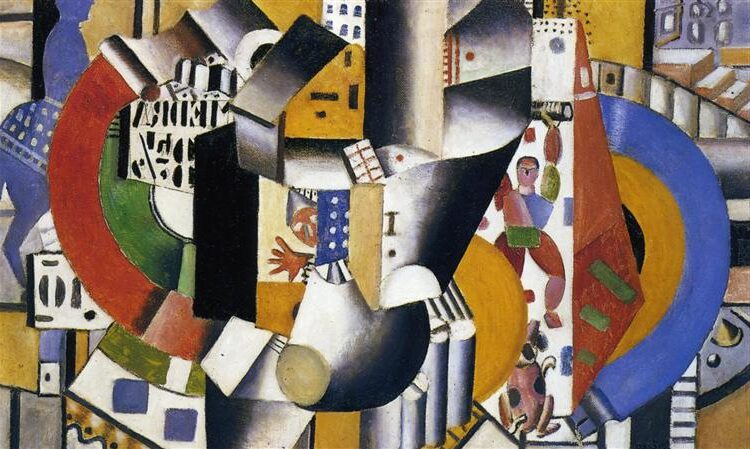
The Circus (Le Cirque, 1918) by Fernand Léger
The Musée Fernand Léger in Biot, France, dedicated to Joseph Fernand Henri Léger, showcases his diverse output. This museum, established in 1960, displays over 500 of his works across various media.
His influence continues in contemporary design, architecture, and commercial art. Léger’s bold use of color, clear outlines, and simplified forms can be seen in modern graphic design and advertising.
Artists working with digital media today draw inspiration from his pioneering approach to depicting movement and mechanical elements. His artistic vision of integrating art with everyday life remains relevant in the 21st century.
Frequently Asked Questions
Fernand Léger developed a distinctive artistic approach that combined elements of Cubism with his own unique vision. His work evolved significantly throughout his career while maintaining bold colors and mechanical forms that reflected the industrial age.
What are the defining characteristics of Fernand Léger’s painting style?
Léger’s painting style is characterized by bold, tubular forms and vibrant primary colors. His work features simplified, mechanical-looking figures and objects with strong outlines.
He developed what critics called “tubism,” using cylindrical shapes to represent human figures and objects. This distinctive approach set him apart from other Cubist painters of his time.
Léger employed high contrast and hard-edged compositions that emphasized the modern, industrial world. His style balanced abstraction with recognizable forms, making his art more accessible to everyday viewers.
How did Cubism influence Fernand Léger’s artwork?
Cubism provided Léger with a framework for breaking down and reconstructing images in new ways. He adapted Cubist principles of fragmentation but made them distinctly his own.
Unlike other Cubists who used muted colors, Léger embraced bright primary colors. He focused on cylindrical forms rather than the angular planes typical of Picasso and Braque’s Cubism.
Léger’s work maintained stronger connections to recognizable objects than many Cubist paintings. This approach helped him develop a more populist style that would later influence Pop Art.
Can you describe the evolution of Fernand Léger’s artistic techniques throughout his career?
Léger’s early work showed influences of Impressionism before he moved toward Cubism around 1909. His experiences during World War I profoundly changed his art, leading to his mechanical period.
In the 1920s, he developed a cleaner, more precise style focusing on modern life and machinery. During this period, he created some of his most recognizable works featuring mechanical elements and human figures.
By the 1930s and 1940s, Léger’s work became more figurative and accessible. He increasingly incorporated everyday subjects while maintaining his distinctive style of bold outlines and vibrant colors.
What role did Fernand Léger play in the development of modern art in the 20th century?
Léger helped bridge the gap between abstract art and popular visual culture. His mechanical aesthetic influenced numerous artistic movements including Purism and Pop Art.
He taught at various art schools, spreading his ideas about modern art to younger generations. Many consider him a key figure in developing a visual language that celebrated modern life and technology.
Léger’s belief that art should be accessible to everyone, not just elites, shaped his approach. This democratic vision made him an important figure in bringing modernist ideas to wider audiences.
How did Fernand Léger’s work reflect the industrial and technological changes of his time?
Léger embraced the machine age, finding beauty in industrial forms and mechanical precision. His paintings often featured factory settings, urban landscapes, and elements of modern technology.
After experiencing World War I, he became fascinated with machinery and its relationship to humans. This fascination manifested in works that combined mechanical forms with human figures.
His bold, simplified style mirrored the efficiency and power of industrial production. Léger saw machines not as threats but as symbols of progress and new possibilities for society.
What are some of Fernand Léger’s most significant contributions to the art world?
Léger pioneered “tubism,” his distinctive approach to Cubism using cylindrical forms. This innovation provided a new way to represent the modern world through art.
His work in film, including the experimental “Ballet Mécanique” (1924), expanded artistic boundaries beyond painting. This multimedia approach demonstrated his interest in reaching audiences through different mediums.
Léger helped establish a visual language that celebrated modern urban life. His influence extended beyond painting to advertising, design, and architecture, making him a truly multidisciplinary modern artist.


